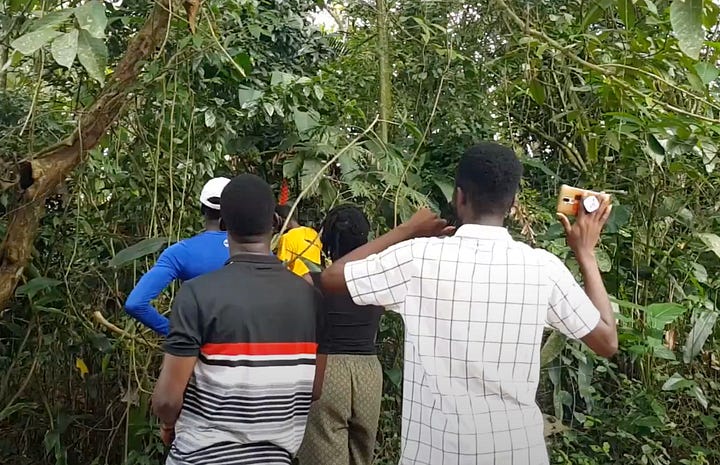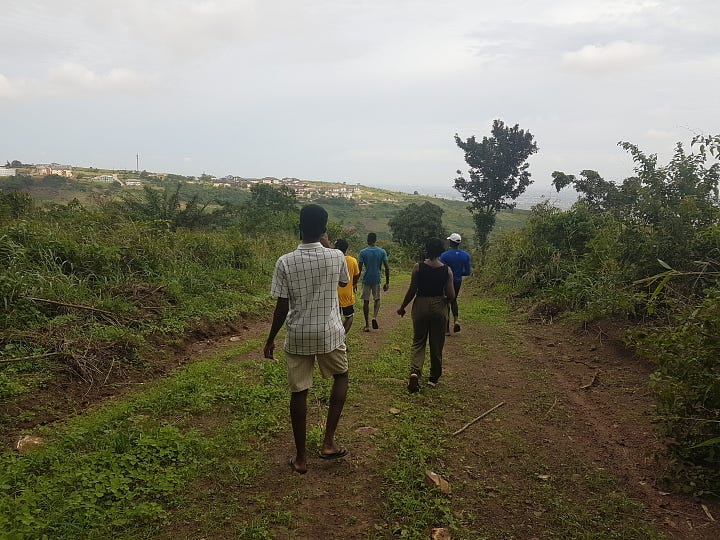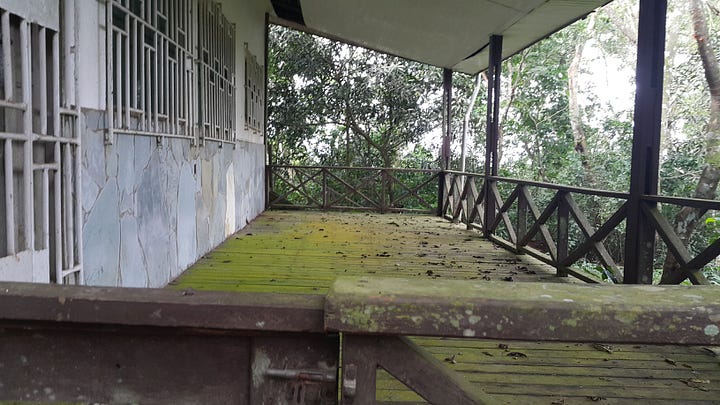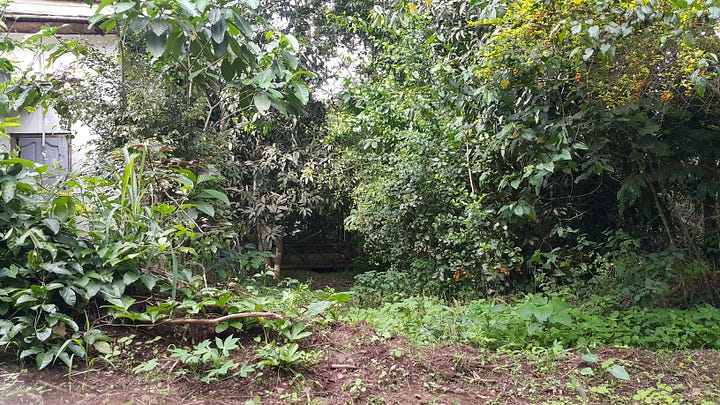Introduction
While Gogomi can be seen as a coordination of 1s and 0s—a geospatial data pipeline more aligned with information systems—to me, the project is more an art project than a product I’m building. It’s a form of expression that embodies specific personal values. In this post, I’ll explore one of these values I think it embodies: the spirit of exploration.
College Days
My love for exploration traces back to my days at Ashesi University (Ghana), perched atop a hill in the Berekuso range. While most people stuck to the main asphalt road winding up to campus, I often branched off, following little dirt pathways to see where they led.
These detours led to unexpected discoveries: pineapple farms, abandoned building projects, and other mysterious things. I called this hobby “Exploring the Unexplored”, often convincing friends to join my little expeditions around the lesser-explored areas of the Berekuso range.
Once, we even ventured to an opposite hill and discovered a run-down shack from—possibly—1970s Ghana hidden in the forest.




At the time, I didn’t think much about this habit. It wasn’t until recently while describing my project to a friend, that I gained a new perspective. She remarked how natural it was for me to create something like Gogomi, given my tendency to “go off script”. That made me reflect on my innate desire to veer off the beaten path—a combination of exploration ethos and a “fuck around and find out” attitude.
Gogomi as an embodiment of my value for exploration
Gogomi embodies my value for exploration and the belief that “there might be another way”. Developing it has reinvigorated my commitment to this principle. Now, I constantly ask myself, “Is there another way, especially one that I haven’t tried yet?”—not just for physical routes, but metaphorically in life.
It’s often about finding the most fulfilling path, the one that yields stories and sometimes leads to transformative journeys. This path may not always be the most efficient; in fact, it could be quite the opposite. But the richness of experience it offers can make it worthwhile.
Surprise while onboarding
When onboarding new Gogomi testers, I often heard confident claims about their extensive walking habits. “Oh, I must’ve covered most of downtown”, they’d say, or “I walked hundreds of times this year!” But as we imported their data and visualised their walks, a common reaction emerged: shock at how little of their city they’d actually explored.
Their paths, once thought diverse, appear as well-worn grooves on the map—commute routes, favourite parks, and perhaps a section of the seawall for those downtown. This revelation is what makes Gogomi powerful—it unveils the unexplored, sparking a renewed sense of adventure. Users suddenly see their city with fresh eyes and are motivated to venture into uncharted territories, much like my old college explorations.
Conclusion
At its core, Gogomi manifests my long-held value for exploration. More than just an app, it’s a catalyst for discovery, challenging me to venture beyond my comfort zone both literally and figuratively. By revealing unexplored areas in familiar environments, it pushes me to break routines and embrace adventure.
Gogomi embodies my belief that there’s always more to discover, even in seemingly well-known places. As I develop and use it, I’m not just mapping streets—I’m charting a course for a more curious way of experiencing my city. This project reminds me that the roads less taken often lead to the most rewarding experiences.
In a future post, I’ll explore another value that Gogomi represents. Until then!






